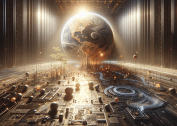Fatigue during work hours isn’t just an individual challenge anymore—it’s a collective productivity dilemma. As remote work blends with hybrid office models, the question of how to stay energized throughout your workday has taken center stage in both wellness and corporate performance discussions. In 2025, the focus isn’t on quick caffeine fixes or outdated productivity hacks. The emerging trends point towards energy management strategies rooted in neuroscience, behavioral design, and mindful tech usage.
This article unpacks the science behind workplace energy slumps and offers practical, modern approaches that can help you maintain focus, vitality, and mental sharpness from your first meeting to the end of the day.

Why Workplace Energy Slumps Happen
Before we tackle how to stay energized throughout your workday, it’s important to understand why energy drops occur in the first place. Research highlights several factors:
- Ultradian Rhythm Disruptions: Human bodies operate in 90-120 minute energy cycles known as ultradian rhythms. Ignoring these natural ebbs and flows leads to cognitive fatigue .
- Context Switching: Constantly shifting between tasks (emails, meetings, messages) depletes mental energy due to the cognitive cost of reorienting focus.
- Digital Overload: Excessive screen time and reactive device usage fragment attention spans, leading to reduced mental endurance .
- Inadequate Micro-Recovery: Unlike sleep, micro-recovery moments during the day (short breaks, deep breathing) are often neglected, compounding fatigue.
Emerging Trend: Energy Management as a Work Skill
Forward-thinking organizations are now treating energy management as a critical workplace competency, alongside time and project management. Companies like Google and Salesforce have launched internal programs teaching employees how to stay energized throughout the workday by aligning tasks with biological energy peaks and incorporating “energy audits” into weekly workflows.
Wearable technology companies, such as Oura and Fitbit, are also developing work-specific energy monitoring features that give real-time feedback on focus levels and recommend break patterns accordingly.
How to Stay Energized Throughout Your Workday: Practical Strategies
1. Align Tasks with Energy Peaks (Chronotype Mapping)
- Identify whether you’re a morning lark, night owl, or somewhere in between.
- Schedule high-focus tasks (strategic thinking, deep work) during your natural energy peaks.
- Reserve low-focus tasks (emails, admin work) for slower energy periods.
2. Implement the 90-Minute Focus Cycle
- Structure work sessions into 90-minute blocks, followed by 10-15 minute recovery breaks.
- During breaks, avoid screens and opt for physical movement or mindfulness breathing.
- This practice syncs with ultradian rhythms, enhancing cognitive refreshment.
3. Use Microbreak Triggers
- Set hourly reminders to stretch, stand, or walk.
- Consider apps like “BreakTimer” or wearable nudges from Fitbit that prompt subtle movement.
4. Optimize Nutritional Energy Inputs
- Avoid high-sugar snacks that spike and crash your energy.
- Choose slow-digesting foods: nuts, fruits, complex carbs, and hydration.
- Incorporate a small protein-rich snack mid-morning and mid-afternoon to maintain consistent energy.
5. Curate a Low-Stimulus Work Environment
- Minimize ambient digital distractions: mute non-urgent notifications, block distracting sites.
- Use noise-canceling headphones or ambient sounds to create a flow-conducive atmosphere.
6. Leverage Controlled Technology Breaks
- Schedule “Tech-Fast” slots where you disengage from all devices for 10-20 minutes.
- Use this time for analog activities like doodling, journaling, or stepping outside.
7. Practice Strategic Napping (20-Minute Rule)
- If your schedule permits, a 20-minute nap post-lunch can boost alertness and mood.
- Avoid longer naps that enter deep sleep stages, which can cause grogginess.
The Role of Mental Energy Mapping Tools
In 2025, several apps and wearables are capitalizing on the concept of mental energy mapping. Tools like Reclaim.ai and Rise Science analyze user work habits and provide tailored schedules that align with cognitive energy patterns.
These platforms offer dashboards visualizing when users are likely to experience energy dips, suggesting optimal times for breaks, creative tasks, or collaborative work. This proactive approach moves beyond simple time-blocking, offering a real-time energy blueprint for the day.
Case Studies: Companies Prioritizing Energy Management
Salesforce’s Energy Audit Workshops
Salesforce introduced quarterly Energy Audit Workshops where teams assess workflows, identify energy drainers, and reconfigure routines. The initiative led to a 32% increase in employee-reported focus during critical work hours.
Google’s Mindful Break Pods
Google revamped its office spaces with Mindful Break Pods—small quiet areas designed for unplugged relaxation. Employees are encouraged to use them in sync with their ultradian low points.
HubSpot’s Focus-Friendly Meeting Culture
HubSpot implemented a “No-Meeting Wednesdays” policy, giving teams an uninterrupted day to engage in deep work. This cultural shift improved project throughput and reduced meeting fatigue.
Busting the Myth: More Hours Don’t Equal More Output
One of the most damaging misconceptions is that extending work hours or pushing through fatigue results in higher productivity. Studies consistently show that beyond 50 hours per week, productivity sharply declines.
By focusing on how to stay energized throughout your workday, professionals can achieve more within standard work hours, maintain mental clarity, and avoid burnout.
Summary Table: Energy-Boosting Strategies for Workdays
| Strategy | Impact on Energy and Focus |
|---|---|
| Chronotype Task Alignment | Enhances task efficiency |
| 90-Minute Focus Blocks | Prevents cognitive fatigue |
| Microbreak Triggers | Sustains attention and reduces strain |
| Nutritional Energy Management | Stabilizes blood sugar and alertness |
| Low-Stimulus Work Environment | Minimizes distraction-induced fatigue |
| Controlled Technology Breaks | Reduces digital overload |
| Strategic Power Naps | Boosts mid-day alertness |
Conclusion
In a world where knowledge work dominates and digital distractions are ubiquitous, understanding how to stay energized throughout your workday is no longer optional—it’s essential for long-term cognitive health and consistent high performance.
Rather than searching for hacks or quick fixes, the future of workplace vitality lies in respecting biological rhythms, integrating micro-recoveries, and designing work habits around sustainable energy practices.
Whether you’re an individual aiming to optimize your workflow or an organization seeking to improve team performance, energy management strategies are the foundation upon which true productivity is built.
References:
- Harvard Business Review (2024). Why Your Brain Needs Breaks to Perform Best. Retrieved from https://hbr.org/2024/03/why-your-brain-needs-breaks-to-perform-best
- American Psychological Association (2025). Digital Overload and Cognitive Fatigue. Retrieved from https://www.apa.org/news/press/releases/stress/2025
- Stanford University (2023). Long Work Hours and Productivity Decline. Retrieved from https://news.stanford.edu/research/2023/long-work-hours-productivity-decline









